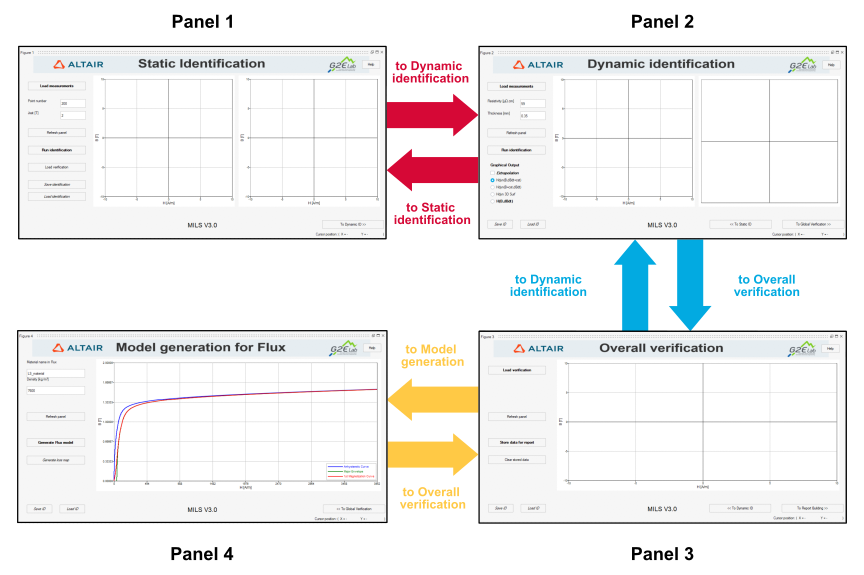Since version 2026, Flux 3D and Flux PEEC are no longer available.
Please use SimLab to create a new 3D project or to import an existing Flux 3D project.
Please use SimLab to create a new PEEC project (not possible to import an existing Flux PEEC project).
/!\ Documentation updates are in progress – some mentions of 3D may still appear.
How to use MILS to generate an LS model
Overview of MILS interface
MILS is an identification tool composed of four panels. Each panel corresponds to a step required in the identification of an LS model representing the hysteretical behavior of a ferromagnetic steel sheet.
- Step 1 - Static Identification panel: uses low-frequency magnetic measurements to evaluate the static component of the LS model.
- Step 2 - Dynamic Identification panel: uses magnetic measurements performed at several frequencies to evaluate the dynamic component of the LS model.
- Step 3 - Overall Verification panel: an optional step used to validate the model issued from the static and dynamic identification steps.
- Step 4 - Model generation panel: creates a .mils file containing the identified LS model. This file is compatible with Altair® Flux® and may be easily imported in that software to describe magnetic regions. At this step, the user may also generate and export a report of the model identification (in .txt format) and a table (in Microsoft Excel .xls format), providing iron loss estimations computed with the LS model.
The user may switch between identification steps by clicking on the buttons on the bottom right corner of each panel in MILS. The diagram in Figure 1 shows how to navigate throughout the interface:

Further reading
LS model identification with MILS
MILS's input and output files formats
Bibliographical references on the LS model
Isotropic soft magnetic material: iron sheets described by LS model